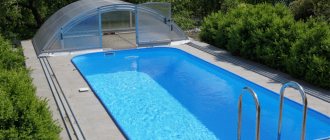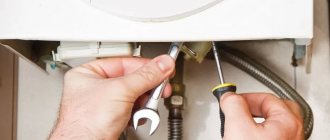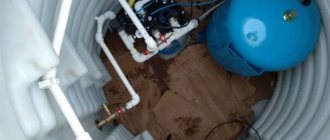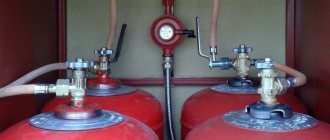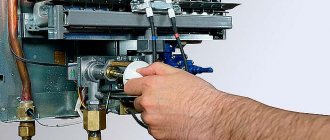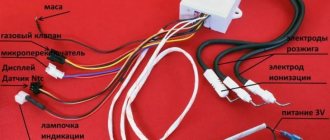Types of devices for pumping water
Physical force alone used to lift water upward is not enough, since the process becomes difficult and labor-intensive.
Therefore, mankind has long ago invented many devices that facilitate the rise of liquid from a well or natural reservoir to the surface. All devices are united by a common operating principle, which is based on the interaction of the valve system.
There are many varieties of hand pumps, but four main types can be distinguished:
- piston;
- rod deep (varieties of piston);
- winged;
- membrane
For manufacturing at home, they usually choose the first type if it is necessary to service a well of shallow depth (3-6 m), or the second if it is necessary to lift water from a well from a depth of 10-12 m.
These models are considered to be the most productive, easy to assemble and install, and reliable. The rest have significant shortcomings, the biggest of which is considered to be insufficient productivity.
It is piston devices that have occupied the main niche among factory manual equipment; they are popular among home craftsmen.
Image gallery
The advantage of piston column pumps is their ease of assembly and installation. All the parts necessary for the manufacture of the body and dynamic parts can be found on the farm or purchased in addition.
And to connect the elements into a single device, home tools are usually enough: a drill, a circular saw, a hacksaw, pliers, and keys. If you need a welding machine, you can rent it or borrow it from your neighbors.
Installation of a chimney in an apartment with wooden walls
In wooden houses, the use of a blue fuel water heater is allowed, but fire safety standards for installing a gas water heater must be observed. The chimney cannot come into contact with wood; non-combustible material must be placed between them.
Basalt or mineral wool can be used as thermal insulation. It is allowed to use heat-resistant polyurethane foam.
This is necessary to prevent fire in the event of strong heating of the chimney. As a rule, old wooden houses do not have chimneys, or they are intended for stove heating. It is prohibited to install gas equipment in unsafe houses.
Image gallery
Photo from
Correct installation on a wooden surface
Violation of speaker installation rules
Protective apron made of ceramic tiles
Features of the use of thermal insulation
Less popular manual modifications
In addition to piston models, which have proven themselves well in factory and homemade versions, other devices are also used.
They are less productive, but interesting from the point of view of design and operating principle.
Image gallery
There are factory models that are not practical to make yourself. For example, equipment based on an impeller. Such devices are used in the industrial sector; they are not very convenient for the garden.
In addition, buying a compact metal device that looks like a can twister will cost no more than making it yourself.
None of the considered homemade pump designs suits you? Then we recommend that you look at more options for homemade products, the production of which we have considered.
Requirements for a standpipe
The production of outdoor speakers is based on state standard number 15150. The main requirements relate to the location of the device, and the number of consumers is also taken into account.
- A column is installed at the location of the water well. If there is no well, it is recommended to build it as close to the sidewalk as possible. The ideal place is a crossroads.
- Consumer coverage is carried out at the rate of one column per area with a radius of 1000 m.
- It is optimal if the street water intake is formed on sandy soils for easy drainage of water into the ground.
- An elevated installation location is better than a low-lying one.
- In winter, it is better to insulate the column, because the metal casing will not be able to protect the water from freezing.
- Installation is carried out on water supply networks in which the pressure does not drop below 1 atm.
All fulfilled requirements guarantee long-term and efficient operation of the device. In this case, the depth of the water pipes must be taken into account. Based on this parameter, the device model is selected.
Preparatory stage of pit construction
The top layer of soil is prone to crumbling, so the well is protected with a special structure - a pit, in other words, a hole one and a half by one and a half meters, the depth of which is no more than 2 meters. Boards are used to strengthen the walls, and they also line the floor. The strength of the floor depends on the thickness of the boards, so products no thinner than 5 cm are used. The pit is covered with a second flooring on top.
The holes for sand wells are small in size and are located at shallow depths, while the holes for artesian wells go several meters into the ground
Then prepare the holes in the following order:
- erecting a drilling rig;
- remove the top flooring;
- find the center point on the lower flooring;
- make a hole whose diameter coincides with the shoe and couplings;
- cut out a second hole - in the upper flooring.
The vertical precision created by the two guide holes guarantees high-quality drilling.
Speaker cost
Prices for outdoor water taps for irrigation and other household needs are almost the same from all manufacturers. They depend on the type of design and length of the device.
- HF 275 cm long costs 5,000 rubles;
- KVO 275 cm – 4500 rub.;
- HF 375 cm – 6300 RUR;
- KVO 375 cm – 5700 rub.
Cost of a standpipe
Spare parts are sold separately: spring 240 rubles, mesh 170 rubles, valve – 150 rubles, ejector 515 rubles, receiver assembled – 3500 rubles, receiver not assembled – 1500 rubles, cap – 1800 rubles.
It is not difficult to install and repair a water standpipe. This should be done by representatives of the water supply organization.
Needle well and tube well, features of arrangement and use
Tube well and Abyssinian are varieties of the classic well with differences in the arrangement of the trunk. Instead of rings, a tubular source shaft is formed from steel pipes, and an Abyssinian well is a needle-shaped well made from small-diameter steel pipes. The water intake is drilled to a depth of 15 m. Wells of this type cannot always be installed at the level of aquiferous sand, and groundwater cannot be used as drinking water.
The Abyssinian well is an improved type of tube well. Despite the shallow depth, there is a chance to get fairly clean water: high water and precipitation do not penetrate into the source. One of the main advantages is the low cost of arrangement and ease of implementation. An Abyssinian well can be made without the involvement of specialists.
The Abyssinian needle well can be used to collect drinking water for one home
The depth of the source ranges from 8 to 15 m. The first aquifer layer of sand lies at this depth. The end of the casing pipe is installed at the boundary between the layers of loam and sand. The main difficulty is to find a place where there will definitely be water at a shallow depth. Usually they are guided by the presence and depth of neighboring water intakes. If the areas are located at the same height, there is a high probability that the water layer occupies a large area.
An igloo well is constructed exclusively in soft soils: clay, loam, clay with layers of sand, quicksand. Such wells cannot be drilled in rocky soil: if a needle hits a boulder, all the work will have to be redone.
Small diameter drive pipe is not designed to pass through rocky soil
Water can be used after testing. Usually the quality of the water is acceptable, and if a filter system is installed, it can be used for cooking. The service life of a well does not exceed 10–12 years. The flow rate is subject to seasonal fluctuations, up to 1.5 m3. The amount of water is enough for 1 – 2 water points.
Surface water intakes are plugged using the impact-rope method. When constructing an Abyssinian well, the pipe is simultaneously the lower part of the casing and the drill. A pipe equipped with a needle-shaped tip and a filter is driven into the ground.
Instead of the impact method, a hand drill or MBU is used
After passing to a depth of 150 cm, the next segment is screwed on (or welded). The finished source is equipped with a surface or submersible pump. To install the equipment, a pit is first prepared, which must be thermally insulated.
Seasonal water supply can be organized in the open ground with flexible hoses
Small wells require constant operation. Regular water intake prevents the filter from clogging. Systematic cleaning can extend the life of the source. Preventive cleaning is recommended annually.
Common problems when using
Problems may arise when using a gas water heater.
Here are some problems that may arise when using a gas water heater:
- Overheating . It can happen for two reasons. The first is insufficient draft in the ventilation pipe. The second is weak water pressure. In case of overheating, the column turns off spontaneously after working for a short time. This occurs due to the fuse tripping.
- Failure of the piezoelectric element . With such a malfunction, the flame will not light up after pressing the ignition button.
- Violation of the integrity of the tank . Such a breakdown occurs on boiler water heaters and leads to water leakage.
All these faults can be corrected yourself. So, overheating can be dealt with by improving traction. Instead of a piezoelectric element, a regular match is used for ignition. And if the integrity of the boiler is damaged, the affected area is sealed with a heat-resistant sealant.
Winter or summer water supply
Plumbing in a dacha is not always used all year round. In some cases, it is needed only from spring to autumn, so a simplified summer version is arranged. There is no point in spending money on an expensive capital system when no one lives in the house in winter. The summer water supply will provide watering, a shower is connected to it, and it is used for other household purposes. It can be permanent or collapsible, but in both cases it is not used in winter.
The hoses used are silicone or rubber, which have thick walls reinforced with nylon. Plastic is cheap, but short-lived under the sun. Rubber is more expensive, but will last at least 15 years. At the end of the season, the hoses are disconnected, twisted, pouring out the remaining water, and sent for winter storage.
Permanent summer water supply is laid in shallow trenches so as not to interfere and so that no one is tempted to steal. Only water taps lead to the surface. The difficulty of the construction is that it requires maintaining a constant slope. It goes from the connection point to the lowest point where the drain valve is installed. Water is drained through it before frost.
Installing a winter water supply is more difficult
They take into account the slope of the relief, soil freezing and other factors that are taken into account when constructing a capital water supply system. In this regard, the dacha option is no different from what is done in private homes with permanent residence
Checking the tightness of gas channels
After installing the water heater, you need to check the gas pipes for leaks. If you have a gas analyzer, this greatly simplifies the procedure and improves the quality of the test. If this device is missing, then you can use the old method.
To do this you will need regular soap, a jar and a brush. The soap is dissolved in the jar to form a liquid emulsion. Next, using a brush, the emulsion is applied sequentially to the pipe joints. As you apply, you need to monitor the appearance of bubbles in the treated areas. If they appear, the leak must be eliminated.
Before testing for leaks, you must take the necessary safety precautions. Be sure to turn off all electrical appliances
Under no circumstances should you check for gas leaks using fire. This is dangerous and may cause an explosion. There is no point in risking your life and the lives of your neighbors.
Gas equipment requires regular inspection and periodic cleaning. You can clean the dispenser yourself, but if you have no experience at all in servicing such systems, it is better to contact a company that has entered into an agreement with you for the supply of gaseous fuel and maintenance of the devices involved.
How to make a tripod for drilling
To properly make the simplest device for hanging a drill column with your own hands, it is enough to take 3 beams or logs that are connected at the top, forming a pyramid with a triangular base. You can also use metal pipes as supports. A winch is suspended from the center of the connection. Through an adapter in the form of a freely rotating spindle with a ring or clamp, a drill string is connected, in the upper part of which a collar is fixed.
Thus, to operate this device, at least 2 people are needed, but 3 are better, then two will rotate the drill, and the third will operate the winch.
To make it easier to work, we first dig a well or pit up to 2 meters deep. Flooring is placed on its bottom, and the walls are lined with boards to prevent crumbling. Leave the center of the hole free for drilling. The second flooring is laid on top, the tripod is installed with a support outside the pit or well.
As the drill sinks, the column is built up with new rods, the topmost of which is attached to the collar. To make the passage of hard rocks easier, you can add water to the well, but then it will be more difficult to understand when wet soil begins to flow, signaling that the aquifer has begun. After finishing the work, you can think about how to cover the well with your own hands. It is better to use an inspection hatch.
A suburban area without water is a small desert. Neither to plant a flowerbed, nor to equip a swimming pool, nor to other common and simply necessary benefits of civilization associated with water supply. There can be only one way out in such a situation - a well at the dacha with your own hands or to order. It all depends on whether you have money and the desire to work. If you have enough energy and enthusiasm, then such a troublesome task as installing a well in your country house will be up to you. Let's look at what kind of wells there can be and what is their difference.
Let's sum it up
- A geyser is a type of water heater in which water is heated by burning gas.
- There are two types of columns - boiler and flow. Which one to choose depends on the specific situation.
- When installing the device, certain standards must be met.
- The most common problems during the operation of the column are failure of fuse sensors, breakdown of the piezoelectric element for ignition and damage to the integrity of the tank (for boiler heaters);
- There are a huge number of geysers on the Russian market today. You can purchase both foreign and domestic devices.
Mechanisms for self-construction of wells
Usually, special drilling equipment is used to construct a well, so a completely logical question arises: how to drill a well in a country house without using it? It turns out that there is a simple manual mechanism consisting of a drilling rig and a column suspended from it. Let's take a closer look at the individual pieces of equipment.
The base is a tower resembling a tripod. The material for the supports is either metal pipes or logs connected at the top with a pin. The drill column lifting block is also located there. The two legs of the tower are connected by a winch (gate).
The design of drilling equipment may vary. In some cases, if the impermeable layer lies close to the surface of the earth, a hand drill is sufficient
The drilling column is the main functional element. It consists of several three-meter rods connected by couplings. Sometimes a length of one and a half meters is enough. It is the column that is immersed in the ground, and its length is adjusted using rods. Replacement of special equipment are water pipes equipped with steel couplings.
Drilling heads must be selected depending on the nature of the soil. Here are the most commonly used: 1 - “spoon”, 2 - “snake”, 3 - “chisel”, 4 - “bailer”
The impact or soil-cutting element is the drill head. It is screwed onto the column using a threaded adapter. As the head is lowered into the soil, soil fills the drill cavities. For different types of rocks, different attachments are used: a “spoon” is suitable for soft soil, a “coil” for dense soil, and a “chisel” for hard rocks. Use a bailer to lift the loosened soil up.
To prevent the walls of the well from crumbling, casing pipes are used - as a rule, these are ordinary plastic plumbing products, lightweight and easy to install. The bottom of the pipe is a kind of shoe, with a smooth or jagged edge at the bottom.
There are two main types of casing shoes: a – toothed (mill), b – smooth. Cutting area: 1 – teeth, 2 – smooth edge
Thus, the construction of a well takes place using special equipment, some of which can be purchased at the store, some of which you can make yourself.
Advice and recommendations from experts
When planning to make a water well or well in your yard, you must first draw up an action plan and organize the work strictly according to it.
Experienced experts advise even those who have thoroughly studied the technology to remember a number of the simplest rules:
- Clogging is carried out for more than one year, so you should not skimp on materials;
- Those who are not confident in themselves should enlist the support of specialists or simply ask them for advice;
- Wells, pipes and columns require periodic cleaning;
- It is very important to properly preserve the system (even if unfinished) for the cold season.
The decision to drill a well yourself is completely justified from an economic point of view. Don’t be afraid of the work, because it doesn’t involve any pitfalls. Punching is carried out using a drill, which is simply screwed into the ground until the aquifer is found. Once one is discovered, you can safely install pipes and a water pumping system.
Drilling process sequence of actions
If you prepare the necessary equipment and follow the sequence of steps, there will be no questions about how to properly make a well. The finished drilling rig is equipped with a head and a mechanism in the form of a winch. The bar is passed down through both holes, if necessary, it is extended and the collar is secured. Usually two people rotate the gate, and a third person is needed to correct the position of the bar.
If the well is shallow, then only a drill column is used, directing it down strictly vertically. A tripod with a lift is necessary for deep wells
A mark is placed on the column, retreating 60-70 cm from the top flooring. Having lowered the column to the designated distance, it is removed back, removing the rock raised along with the drill. The cleaned column is immersed in the same way several times. Greater depth requires extension of the bar. To do this, another pipe is connected using a coupling.
Depending on the stability of the soil, the drilling method is chosen - with or without casing pipes. With stable, dense soil, you can drill the entire well without using casing pipes. Crumbling rocks indicate that after 2-3 meters a pipe equipped with a shoe should be installed. The diameter of the pipe is wider than the diameter of the couplings, so the pipe enters the shaft with difficulty. Sometimes, to place it there, they use a screw or a sledgehammer.
Products for laying water pipes are used as casing pipes - metal or polypropylene pipes of the required diameter for external work.
If rocks are crumbling, collapse should be avoided. For this purpose, the drill is not lowered too low - below the end of the casing by a certain distance. Usually it is equal to half the length of the drill. Thus, the process consists of alternating drilling and installation of casing pipes, which are built up as they go deeper.
Specifications
Water dispensers produced in Russia are strictly manufactured in accordance with GOST. Therefore, they have standard technical characteristics:
- operate at a water pressure within the water supply network of 0.1-0.6 MPa;
- the diameter of the pipe connecting the device to the water supply is 20 mm;
- outlet pipe diameter – 15 or 20 mm;
- vertical valve stroke – 16-18 mm;
- The weight of the device with a length of 1.25 m is 31 kg, the weight increase is 2.6 kg for every 25 cm of increase in the length of the device.
The speaker body is made of steel or cast iron and painted to prevent it from rusting. The device itself is a collapsible device, so it can be easily repaired. Manufacturers offer any parts and components as spare parts.

